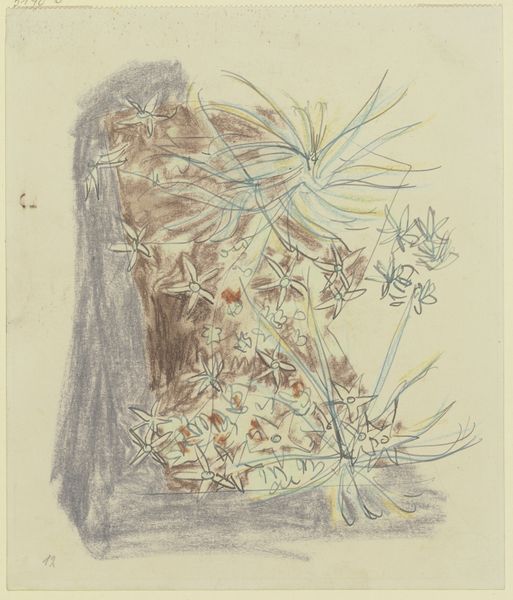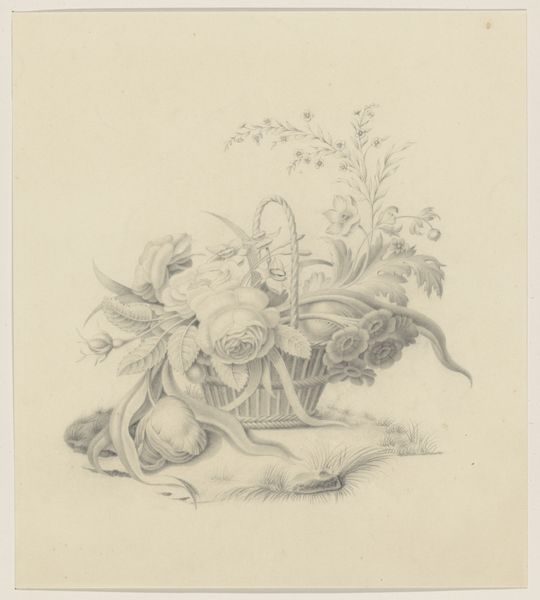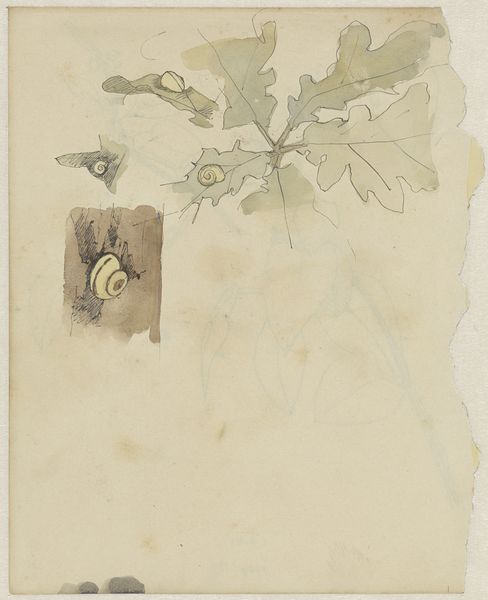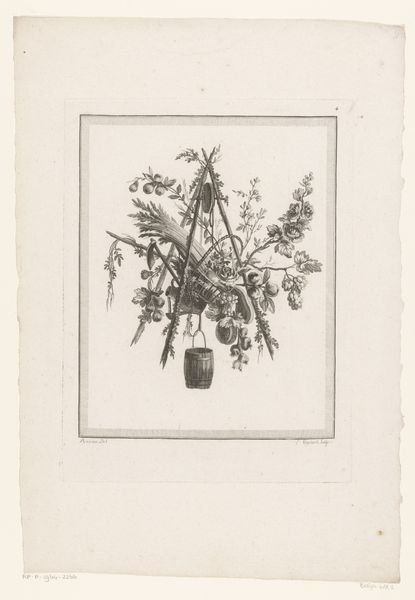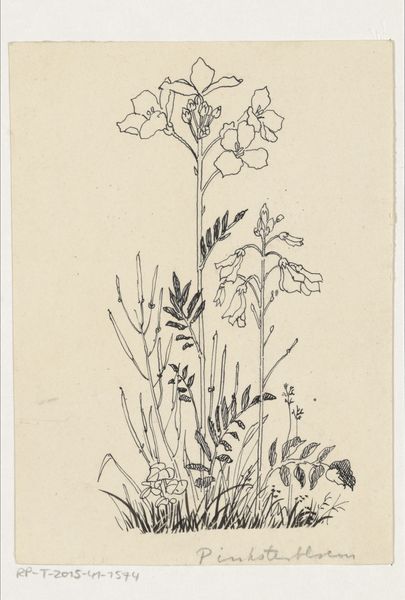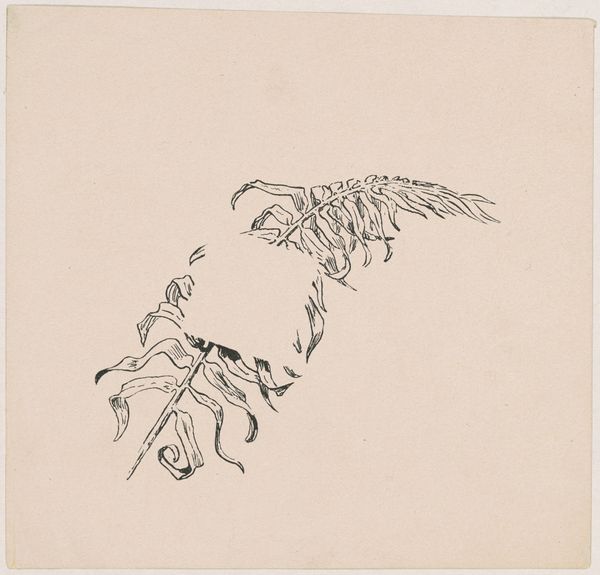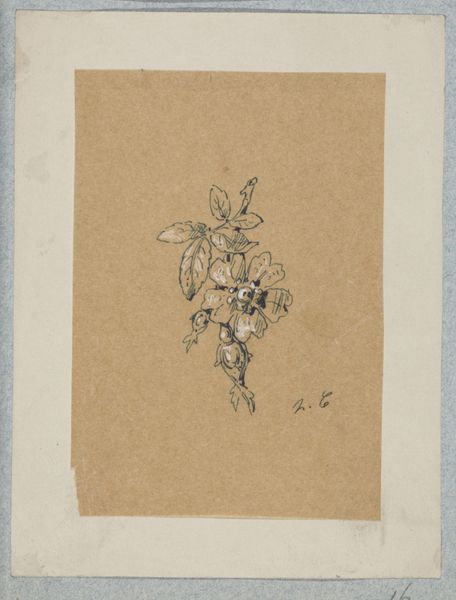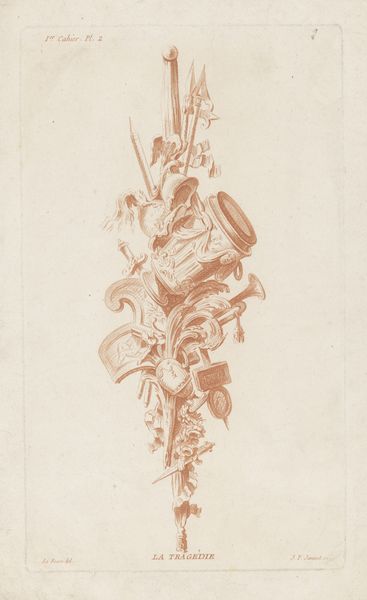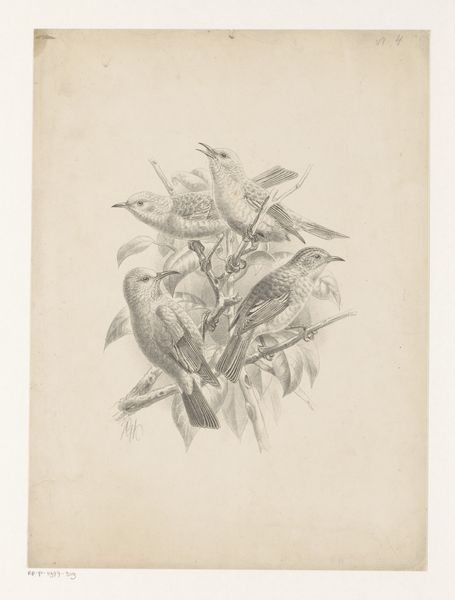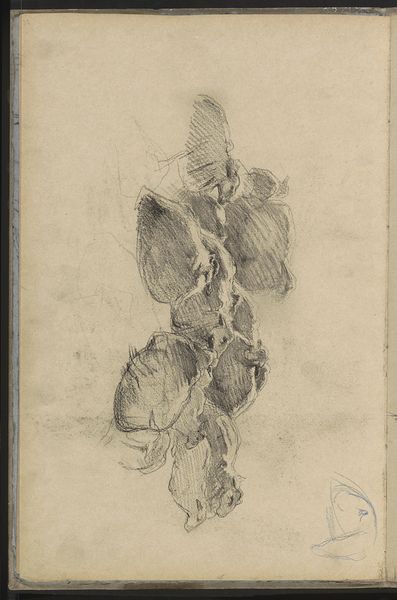
drawing, ink, pencil
#
drawing
#
organic
#
ink
#
pencil
#
botanical drawing
#
sketchbook drawing
Copyright: Public Domain
Curator: Let’s turn our attention to this delicate drawing, "Study of Plants," by August Babberger. It resides here at the Städel Museum, a subtle piece executed with pencil and ink. Editor: It has a quiet fragility. A muted palette—browns, greens, a hint of yellow. The overlapping lines create a sense of tangled density. I find it almost melancholy. Curator: It reminds me of a pressed flower, discovered within the pages of an old book. Think of botanical illustrations, and the tradition of capturing and cataloging the natural world. It also echoes a broader impulse, this drive to understand the interconnectedness of living things, how specific form reveals more universal patterns. Editor: Absolutely. And beyond classification, the plants evoke an environmentalist narrative: looking back to a moment before rampant deforestation. These sketches, in this specific selection of colour, suggest themes of preservation of natural species, and the way organic forms were understood during the late 19th/early 20th centuries. Curator: Babberger is observing and archiving here but it has an implicit personal resonance, no? A kind of introspective meditation upon life. The interwoven chaos of lines that could suggest interconnected fates or just the quiet contemplation of his subjects. Editor: I'd agree. I see themes of personal growth and resistance within those delicate but complex networks of lines that define the central floral form. Curator: Looking at it this way helps consider broader systems of existence in our lives. Babberger appears to have found significance within a relatively limited and restrained scope here. Editor: Right. Something understated can reveal deep reserves. An urgent cry is not always as affecting as the most minor call to contemplation and preservation, maybe this image has this function. Curator: I suppose ultimately we can say there is a silent urgency that can reverberate across different historical periods as visual testaments, maybe even through unassuming botanical studies. Editor: A good point. Thank you for sharing these perspectives, it was a nice challenge.
Comments
No comments
Be the first to comment and join the conversation on the ultimate creative platform.
